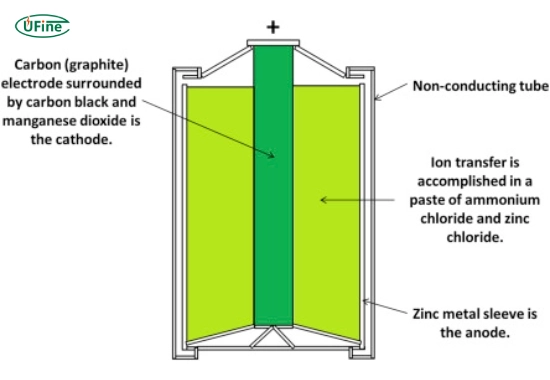
- Part 1. What is a carbon battery?
- Part 2. Advantages of carbon batteries
- Part 3. Applications of carbon batteries
- Part 4. How do carbon batteries compare to lithium-ion batteries?
- Part 5. Can carbon batteries replace lithium-ion batteries entirely?
- Part 6. How do carbon batteries perform in extreme temperatures?
- Part 7. Challenges facing carbon battery development
- Part 8. Current research trends in carbon battery technology
- Part 9. FAQs
Carbon batteries are revolutionizing the energy storage landscape, offering a sustainable and efficient alternative to traditional battery technologies. As the demand for cleaner energy solutions grows, understanding the intricacies of carbon batteries becomes essential for both consumers and industry professionals. This guide will delve into carbon batteries’ workings, advantages, applications, and future potential, ensuring you have all the essential information at your fingertips.
Part 1. What is a carbon battery?
A carbon battery is a rechargeable energy storage device that uses carbon-based electrode materials. Unlike conventional batteries that often depend on metals like lithium or cobalt, carbon batteries aim to minimize reliance on scarce resources while providing enhanced performance and safety.
Key Components of Carbon Batteries
- Anode: Typically composed of carbon materials, the anode is crucial for energy storage.
- Cathode: This component may also incorporate carbon or other materials that facilitate electron flow during discharge.
- Electrolyte: The electrolyte allows ions to move between the anode and cathode, enabling energy transfer.
How Do Carbon Batteries Work?
The operation of a carbon battery is similar to that of other rechargeable batteries but with some unique characteristics:
- Charging Process: During charging, lithium ions move from the cathode through the electrolyte and are stored in the anode. The carbon material in the anode captures these ions effectively.
- Discharging Process: When discharging, the stored lithium ions return to the cathode, releasing energy for use. The flow of electrons from the anode to the cathode produces electrical power.
- Efficiency and Stability: Carbon materials provide excellent conductivity and stability. This enhances energy transfer efficiency. Their structure allows them to handle many charge-discharge cycles without major degradation.
- Temperature Resilience: Carbon batteries perform well across different temperatures, making them suitable for various environments. Their stable properties help prevent issues like thermal runaway found in lithium-ion batteries.
Part 2. Advantages of carbon batteries
Carbon batteries provide several compelling benefits over traditional battery technologies:
- Sustainability: Using abundant and recyclable carbon materials lowers environmental impact.
- Safety: Carbon batteries are less likely to overheat and catch fire compared to lithium-ion batteries.
- Longevity: They usually have longer life cycles, making them more cost-effective.
- High Energy Density: Carbon materials can offer higher energy density, leading to smaller and lighter battery designs.
Part 3. Applications of carbon batteries
The versatility of carbon batteries makes them suitable for various applications:
- Electric Vehicles (EVs): As the automotive industry shifts to electric, carbon batteries can improve range and reduce weight.
- Renewable Energy Storage: They can effectively store energy from renewable sources like solar and wind.
- Consumer Electronics: Carbon batteries can offer efficient power solutions for smartphones and laptops.
- Grid Storage: Carbon batteries can help stabilize power grids by storing extra energy during low demand and releasing it during peak times.
Part 4. How do carbon batteries compare to lithium-ion batteries?
When comparing carbon batteries to lithium-ion batteries, several vital differences emerge:
Material Availability:
- Carbon is abundant and widely available.
- Lithium is less abundant and often requires environmentally damaging mining practices.
Safety Concerns:
- Carbon batteries have a lower risk of thermal runaway.
- Lithium-ion batteries can overheat and pose fire hazards under certain conditions.
Longevity:
- Carbon batteries can last up to 3,000 charge cycles.
- Lithium-ion batteries typically last around 500 to 1,500 charge cycles, depending on usage.
Energy Density:
- Carbon batteries can achieve energy densities of around 200 Wh/kg.
- Lithium-ion batteries can reach up to 250 Wh/kg or more but have safety risks.
Environmental Impact:
- The production of carbon batteries has a lower environmental footprint.
- Lithium-ion production involves significant ecological concerns due to mining practices.
| Feature | Carbon Batteries | Lithium-Ion Batteries |
|---|---|---|
| Material Availability | Abundant carbon | Limited lithium |
| Safety | Higher safety | Risk of overheating |
| Longevity | Up to 3,000 cycles | 500 to 1,500 cycles |
| Energy Density | ~200 Wh/kg | Up to 250 Wh/kg |
| Environmental Impact | Lower | Higher |
Part 5. Can carbon batteries replace lithium-ion batteries entirely?
While carbon batteries have many advantages over lithium-ion technology, they are not likely to fully replace them in all uses. Instead, they are expected to complement lithium-ion systems by offering alternatives in areas where sustainability and safety are most important. For example, carbon batteries may become more common alongside lithium-ion options in electric vehicles and renewable energy storage systems, where weight and efficiency matter.
Part 6. How do carbon batteries perform in extreme temperatures?
Carbon batteries generally perform well in extreme temperatures due to their stable chemical properties:
- Cold Temperatures: They maintain efficiency even at low temperatures, unlike lithium-ion batteries, which may suffer reduced capacity in cold environments.
- High Temperatures: While they resist overheating better than their lithium-ion counterparts, excessive heat can still impact performance; however, their risk of thermal runaway is significantly lower.
This resilience makes carbon batteries suitable for diverse applications with common temperature variations.
Part 7. Challenges facing carbon battery development
Manufacturers must address several challenges despite the potential benefits.
- Manufacturing Scalability: Creating efficient manufacturing processes that can increase production is a challenge for widespread adoption.
- Performance Optimization: Ongoing research is necessary to improve performance metrics like charge time and overall efficiency.
- Market Acceptance: It is essential to educate consumers and industries about the benefits of carbon battery technology for better market penetration.
- Cost Competitiveness: Costs are expected to drop with advancements, but matching prices with established lithium-ion systems remains difficult.
Part 8. Current research trends in carbon battery technology
Researchers are exploring various avenues to enhance carbon battery technology:
- Nanotechnology: Using nanomaterials can greatly enhance conductivity and efficiency by increasing the surface area for ion exchange.
- Hybrid Systems: Mixing carbon with other materials can lead to better performance by utilizing the strengths of each component.
- Recycling Methods: Creating efficient recycling methods for used carbon batteries is crucial for sustainable lifecycle management.
Part 9. FAQs
-
What types of applications are best suited for carbon batteries?
Carbon batteries are ideal for various applications, including electric vehicles, renewable energy storage systems, and home backup power solutions. Their stability and high cycle life make them particularly effective in environments where reliability is crucial. -
How do carbon batteries contribute to sustainability?
Carbon batteries utilize abundant and recyclable materials, significantly reducing their environmental impact compared to traditional lithium-ion batteries. Their production processes are also generally less harmful to the environment, making them a more sustainable choice for energy storage. -
What is the typical lifespan of a carbon battery under everyday use?
Under optimal conditions, carbon batteries can last up to 3,000 charge cycles. This longevity makes them a cost-effective option over time, as they require fewer replacements than conventional battery technologies. -
Are there specific maintenance requirements for carbon batteries?
One advantage of carbon batteries is that they are maintenance-free. Traditional lead-acid batteries do not require regular checks or fluid top-ups, allowing users to “set and forget” their energy storage systems. -
How do carbon batteries perform in terms of charging speed compared to lithium-ion batteries?
Carbon batteries usually charge at a speed similar to lithium-ion batteries. However, ongoing research aims to improve their efficiency even more. While lithium-ion technology currently excels in rapid charging, advancements in carbon battery technology may help close this gap.
Related Tags:
More Articles

Battery Load Test: A Comprehensive Guide
Step-by-step battery load test guide for car, solar & industrial use. Learn how to load test a battery, interpret voltage charts, and avoid common mistakes.
The Comprehensive Guide to Battery Balancing and Battery Balancer
Discover how battery balancers improve lithium battery performance, lifespan, and safety. Learn types, functions, and tips to choose the right balancer.
What Is the Best Voltage for a Chainsaw Battery?
Compare 12V-80V chainsaw batteries for light pruning, medium firewood, and professional cutting. See best battery chainsaw with runtime charts and safety tips.
Lithium VS. Alkaline Batteries: A Comprehensive Comparison
Lithium batteries last 3–7× longer than alkaline and perform better in cold weather. Compare lifespan, cost, safety, and best uses to choose the right battery.
Comparing Lithium-Sulfur and Lithium-Ion Batteries: Which is Right for You?
Compare lithium-sulfur (Li-S) and lithium-ion batteries on energy, lifespan, cost, safety, and applications. Best choice for drones, EVs, and electronics.



